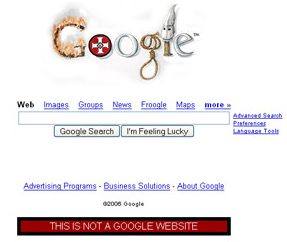In an information-based age, the ability to search and organize information amounts to power. Search engines shape knowledge, modulate web traffic, and contribute to the creation of new semantics and meanings. Currently, Google's influence is unparalleled. It has expanded the way that we search and find information, and inserted itself into nearly every web-based activity.
The selection of projects in Google Art, or How to Hack Google illuminate and critique the influence of this expanding online institution. The projects include ad hacks that attempt to foil Google's seemingly unstoppable business machinery, playful re-interpretations of search results and alterations of its geographical worldview. Together, they elevate and critique Google's logic, while recognizing its own deepening relationship with our culture, behavior and lives.
Curated by Ana Otero for Rhizome.
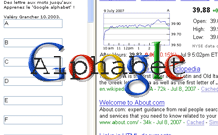 |
Google Alphabet and Google Numbers
|
Artist Valery Grancher is interested in the way Google mediates our access to information. Google Alphabet and Google Numbers demonstrate how Google search results can re-write established systems of classification. With Google Alphabet, participants can see how each word is defined or contextualized by Google. Similarly, Google Numbers encourages participants to produce numbers from 1-1001. Both works point to the underlying business and advertising influences that order the results, critiquing the assumption of 'popularity' upon which Google search results are meant to rely upon.
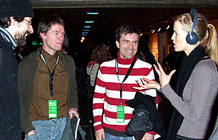 |
Human Browser
|
Human Browser is a series of performances (9 to date) based on a wireless intervention into Google. The Human Browser application locates, re-arranges and then transmits streams of words to an actor who then recites them aloud. The winning project of Share Festival 2007, Human Browser dramatizes the effects online tools have on social behavior and critiques the homogenization of knowledge and, by extension, thought and creativity.
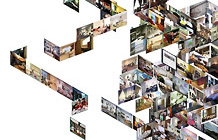 |
Googlehouse.net
|
Googlehouse.net by Marika Dermineur and Stéphane Degoutin is a Flash animation composed of pictures culled from Google's image search. The project animates the images, like shifting tiles, into a house that consists of rooms each one based off a keyword. Illustrating the unstable classification of images and varying links between them, Googlehouse.net is a structure constantly in flux breaking apart and re-constituting endlessly.
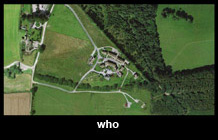 |
Traces of a Conspirancy
|
Gregory Chatonsky's Traces of a Conspirancy combines Google Maps Satellite Images, Flickr Photos and found text to produce a generative narrative. Through zooming, panning and flashing, the piece evokes the paranoid and breathless tone of a conspiracy theory while leading its audience through a limitless dialog picked from random text found on the internet.
 |
The Google Adwords Happening
|
Inspired by the recurring topic on Rhizome of whether one can earn money as an Internet artist, French artist Christophe Bruno launched The Google Adwords Happening in 2002 with the aim of determining the relative value of words on the Internet. His online happening consisted of poems in the form of Google AdWords -- short, text-based ads. Based on keywords such as "symptom", "dream", "mary", "money", the piece explored the expressive qualities of the commodification of common keywords. The poems were censored by Google 24 hours after their launch. The Google Adwords Happening was awarded with an Honorary Mention at the Prix Ars Electronica 2003.
 |
GWEI: Google Will Eat Itself,
|
The GWEI: Google Will Eat Itself project generates money through the Google's AdSense program then uses this revenue to buy shares of Google stock. It then gives the shares back to Google users through GTTP Ltd. [Google To The People Public Company]. This conceptual deconstruction of the successful click-based advertising model takes aim at Google's increasingly powerful grip on the economics of the Web.
 |
Newsmap,
|
Newsmap is real-time visualization of headlines from Google News aggregator. The project was developed by Marcos Weskamp and Dan Albritton and recieved the Net Vision Award of Distinction at Prix Ars Electronica 2004. The purpose of the project is to display the relationships between data and unobserved patterns in news media around the globe. In Newsmap the size of each cell is determined by the amount of related articles that exist inside each news cluster that the Google News aggregator presents. Users can quickly identify the news with the most coverage, viewing the map by region, topic or time. It is in this way that Newsmap graphically identifies the inherent bias in media.
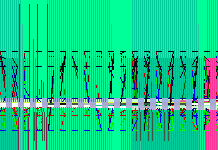
|
Small Words,
|
In Small Words, Mark Napier, a pioneering Internet artist that combines his training as a painter with an extensive expertise as a software developer, creates an electronic abstraction based on the results of four key words searches (USA, green, stats and map) culled through Google Image Search. In what amounts to an electronic action painting, Napier re-interprets the images using Feed, an application commissioned by SFMoma that reduces an online source of information (websites, images) into a stream of pixels. In his pursuit of capturing and re-visualizing existing data through Feed, Napier transforms data charts into colorful, abstract landscapes.
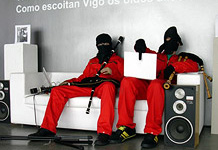 |
Escoitar.org,
|
Escoitar.org is an open, collaborative project that encourages the addition of recorded soundscapes onto online maps. Enabled by a hack of the popular Google Maps program, Escoitar.org (meaning 'Listen' in Galician language) was inspired by a particular desire to preserve the acoustic patrimony of Galicia, a region in the Northwest of Spain. Through the visual network between locations and accompanying sounds, Escoitar.org allows people to understand landscapes, not only visually as places, but also via their autochthonous sounds.
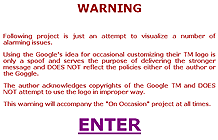
|
On Occasion,
|
In On occasion, Boston-based Polish artists Piotr Parda subverts Google's logo, probably the most recognizable online icon, to honor not only Valentine's Day or the Olympics but other significant monuments from the world we live in: the crisis in Darfur, increasing presences of fundamental groups, and issues like global warming and AIDS.

